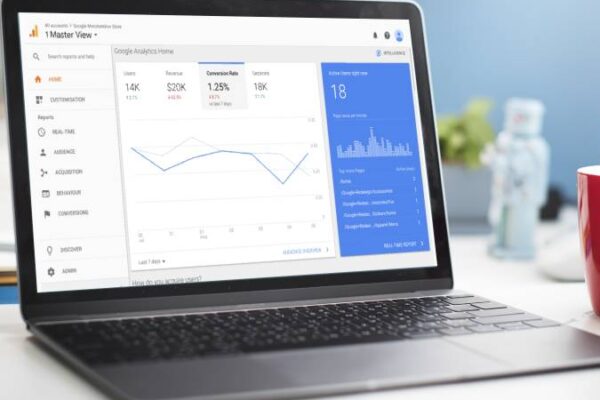Google Analytics – the linchpin of every digital marketer’s data reporting schema – is set to go through some big changes in the next year. As I detailed earlier this year, Google has announced that in 2023 they will deprecate Universal Analytics (UA), the version of Google Analytics that we have become accustomed to over the last decade.
We recently presented a LinkedIn Live webinar to answer some of the most frequent questions we’ve been receiving about the changeover.
Do I have to switch to GA4?
Everyone needs to migrate from Universal Analytics to Google’s new tool, Google Analytics 4 (GA4), by June 2023. In fact, June 2022 is the last month organizations can retain Year-Over-Year data in Universal Analytics. That means it’s critical to get GA4 up and running NOW in order to have the two run in parallel to ensure no loss in data collection, and time to become comfortable with the GA4. Starting early to build sufficient historical data allows your business to avoid having to go through a period of making business decisions based on incomplete insights. Starting now also gives you time to reassess your options for what tool best meets your data collection needs.
What does this mean for my business’s historical data?
In June of 2023, UA will no longer collect data. A robust data archiving and collection system will need to be put in place in order to save any of your legacy data from UA. Marketing managers at enterprise-level analytics professionals will need to coordinate with IT to be sure that information is being retained in their data lake and archiving is in process.
What are the main differences between UA and GA4?
GA4 is new and improved with quite a few beneficial features, but keep in mind that it has a completely different data schema from Universal Analytics. For that reason, users will need to relearn Google Analytics to adapt to GA4. Additionally, data from Universal Analytics cannot be transferred or used in comparison to new GA4 data as some of the metrics tracked in GA4 are completely different.
GA4 is a significant change for businesses. It’s a completely new interface that offers a more streamlined and robust experience. One big difference is that GA4 doesn’t contain all the bells and whistles that UA contains out of the box. While marketers who have made the switch have been wowed with its functionality, GA4 doesn’t offer all the same out of the box functionality they are used to.
With these changes GA4 may not remain all companies’ ecosystem of choice for collecting and analyzing data. It does a disservice to enterprise marketers to move to GA4 as a path of least resistance. It’s the right time to consider whether another technology stack is the better option in relation to your business needs and the rest of your marketing suite tools.
Why should I consider other changes now?
The way we think about the customer journey is changing. And so is how we acquire visitors – whether it’s paid spend or through some other type of organic method, we’re seeing that there are potentially multiple ways for marketers to acquire data. Ultimately, the customer journey has become complex enough that one toolkit can’t solve everything.
We understand this at Perficient because we do work not just as part of the customer acquisition funnel, but also under the lens of how digital traffic might impact other parts of the business, such as call center volume. We’re really at a crossroads where marketing technologists contribute to a business’s bottom – and topline performance through their work. That wasn’t always the case before 2019, but now we’re seeing the customer journey taking place completely online.
What else do I need to know about transitioning to GA4?
Here are some Tips and Tricks to ease your transition:
- Google released a migration tool that can be used to speed up migration. Be sure to leverage this tool before attempting any manual conversions.
- You should continue to use your tag manager of choice to configure events. The primary difference is you’ll use a new tag in Google Tag Manager to integrate with GA4. This is one area where GA4 offers more, as you get more events out of the box with GA4. It aligns much more closely with the way Google is using autocapture tools with events.
- Leverage a tag auditing system of some kind. There are multiple available in the industry. They scan your pages and tell you what you’re tracking and where, and that will allow you to get very clean visibility. It saves a lot of time from having to click into each individual tag.
- Partner with a seasoned implementer. Whether internal or external, partnering with someone experienced will be the fastest way to do the migration.
Due to how different GA4 and Universal Analytics are, setting up GA4 will be a completely fresh implementation with the Universal Analytics setup serving more as a point of reference than a migration source.
Will reporting be different?
Despite all the changes I’ve mentioned, GA4 offers some real advantages. Although there are significant differences between the UA reporting interface and new one. GA4 provides much more flexible report time query and ad hoc reporting. Google is even adding a feature that events can be broken down into dimensions on an ad hoc basis.
From a migration path perspective, the new reporting system is relatively robust, modular and customizable. It will remind many people of the way Google Data Studio works. In fact, a lot of the lessons learned in Google Data Studio have been pulled into GA4.
GA4 also brings access to Big Query to all users, previously only enterprise customers had access. Keep in mind, there are more storage-related costs associated with GA4 and the pricing model reflects that. A Google partner will be able to guide you through this.
I heard GA4 doesn’t support tracking cookies?!
One thing I’ve gotten a lot of questions about is Google’s decision to end the use of third-party tracking cookies and how that will affect data collection in GA4 and elsewhere.
Google will not be giving up the ability to track individuals across its advertising ecosystem. What we’re seeing is that Google still has a plan to make visitors valuable to advertisers. Whether it’s baked into its Chrome browser or baked into some other solution, the impact for GA4 will be the same as the impact for Google in general. Google sees GA4 as the future of data collection. GA4 will be ready to support new cookieless mechanisms for tracking.
We, as marketers, owe it to our visitors to establish trust and to take a look at how data is used in Google’s ecosystem in general.
Whether you feel ready or not to make the migration to GA4, it’s time to get started. Perficient can help you decide on the best migration plan for your business. Contact us.

